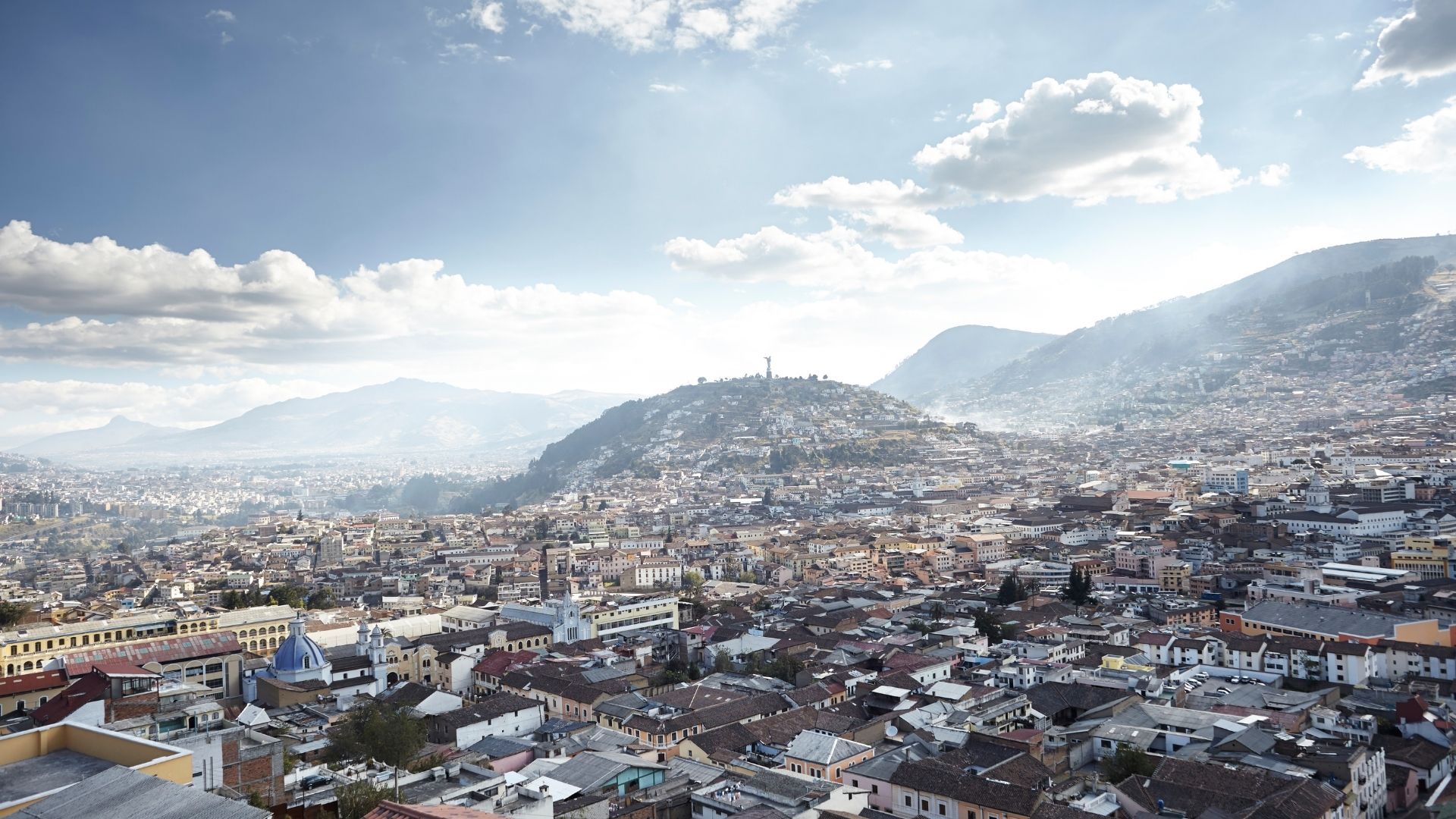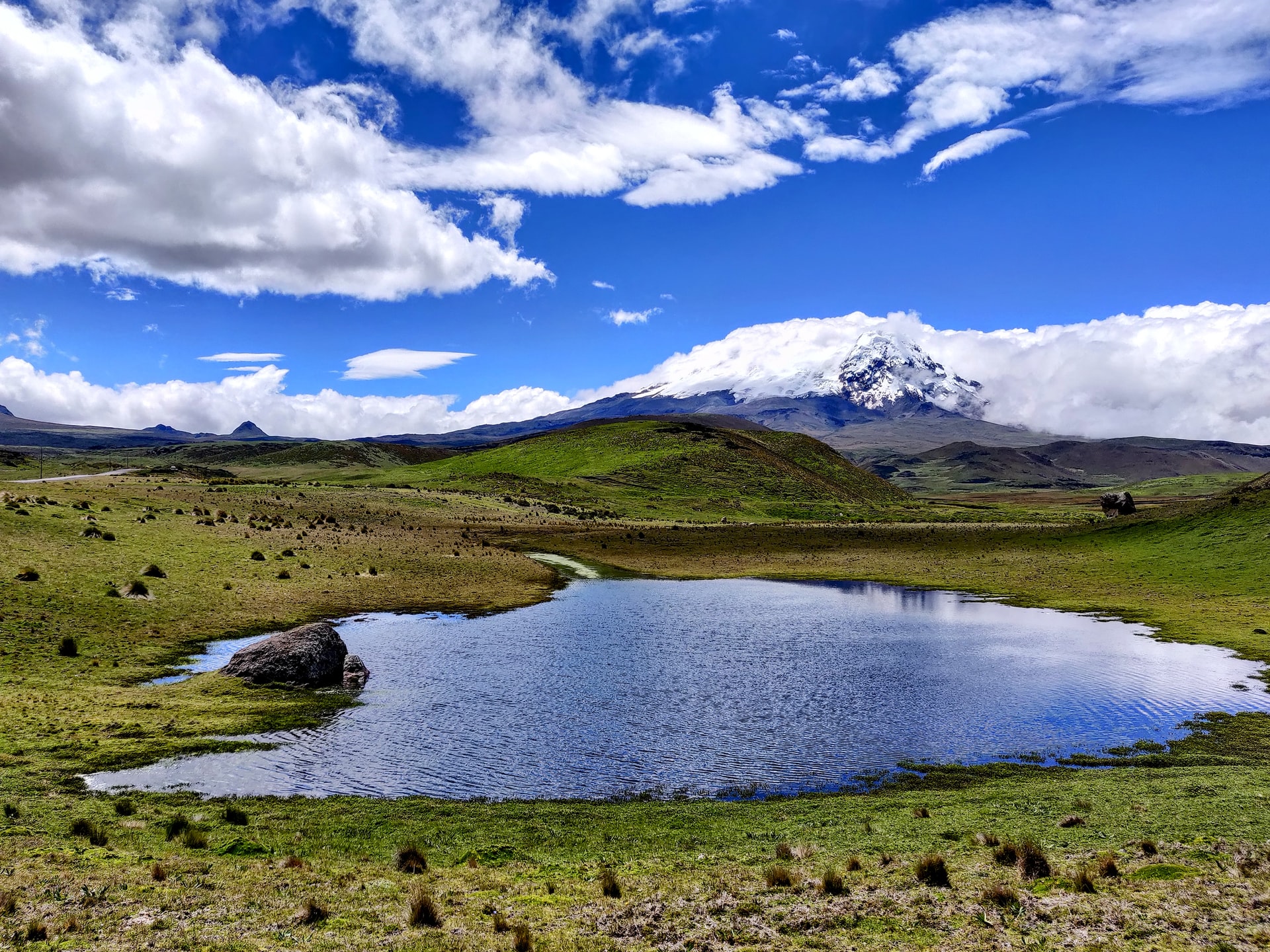Visit Quito: 9 Points of Interest that will Enchant You
Ecuador is known for its diverse landscapes, welcoming people, and historic beauty. The rugged Andean peaks offer sublime views and enticing excursions, while the Galapagos seduce you with unchallenged biodiversity. Ecuador’s capital is perched upon an Andean plateau and nestled between mountain peaks. When you visit Quito, it will become clear that the place holds a little ancient magic. A wonderful collection of traditional native culture and Spanish influence, the city is a must-see in this humble South American country.
9 Exquisite places to see when you visit Quito
1. Visit Quito’s Casa del Alabado: Museo de Arte Precolombino
This museum is the perfect spot to begin your discovery of Quito. You’ll have the opportunity to soak up ancient culture at your own pace, and learn about the unique history of this wonderful country. The museum is in one of the oldest buildings in the Historic Center of Quito. It is believed to have been built in the 16th century, but the exact date it was built has been lost to time.
With around 5,000 archaeological artifacts, including ceremonial artifacts made from ceramic, stone, wood, and metal, the museums’ collection is dazzling, to say the least. Each object gives you a glimpse into the spiritual, social, and political practices of Ecuadorian history.
Exhibits encapsulate the varied cultures of Ecuearodian people, from the pacific coast to the Andean mountains and Amazon rainforest. Most of the permanent collection is comprised of ceramics that were used in ritual and ceremonial practices.
You’ll discover a world caught between changing architectural styles and a rich tapestry of culture. It is a space in which many stories, times, and places coexist.
2. Soak up the views of Quito at El Panecillo
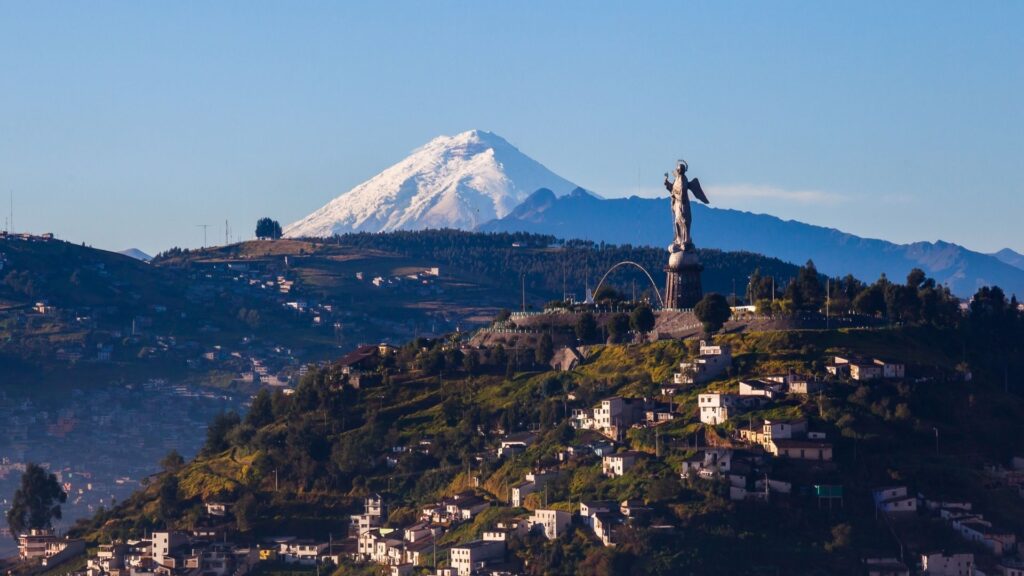
After you have spent valuable downtime meandering through the museum, you will need to get your bearings. Located in central Quito, El Pancecillo (Spanish for “small piece of bread”) is the perfect place to soak up the city’s beauty. Walk, drive, or ride up to the top of a volcanic hill for breathtaking views of the city below. At 9,895 feet above sea level, you’ll get a sense of what living in the Andes is really like.
This observation point offers the most stunning views, and a chance to take in the spectacular stature of the Vigen del Pancecillo, which watches over the city. Erected in 1976, the approximately 150 feet tall statue is made of thousands of pieces of aluminum. The Madonna is an iconic image in art, however, this depiction is the first to show her in a state of movement. It is as if she is frozen in a dance.
The original name of this hilltop was “Yavirac”, and many indigenous people still refer to it as such. In fact, the surrounding neighborhood is called “Yavirac”. According to historians, there was once a temple dedicated to worshipping the sun perched on the peak.
3. Visit Quito’s Historic San Francisco Square
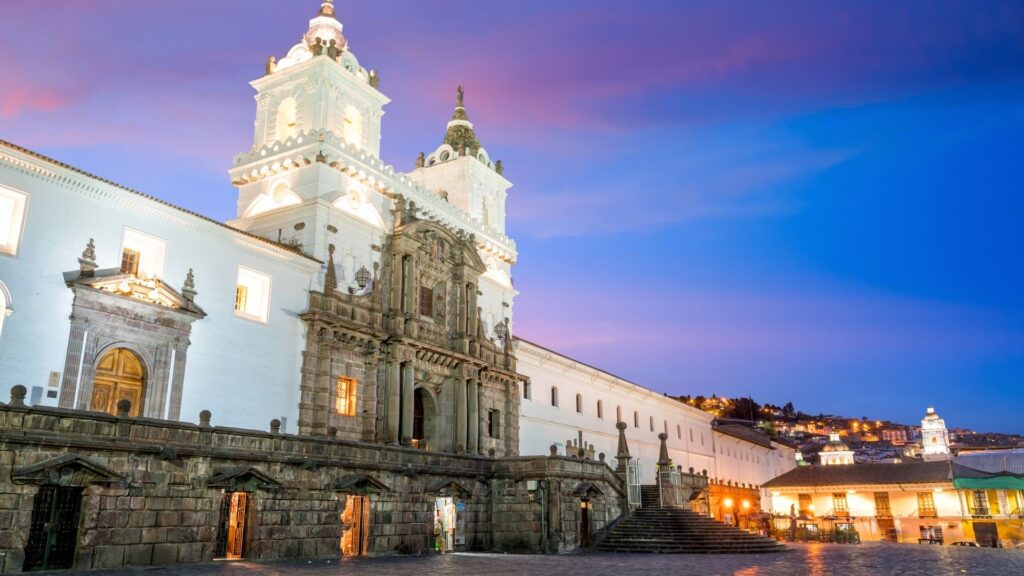
The historic center of Quito is one of the largest, least-altered, and best-preserved in the Americas, and one of the first UNESCO Heritage Sites in the world. The Plaza de San Francisco is the heart of the city and the historic center of Quito. When you visit Quito, this bustling city center will give you a better understanding of the past as well as the present.
The cobbled town square is home to many iconic sights in Quito, most notably, The Church and Convent of Saint Francis (La Iglesia y Monasterio de San Franciso). This monastery is a Catholic clerical complex located on the corner of García Moreno and Sucre streets. It is the largest architectural complex among the historic centers of Latin America.
The church is as old as the city itself, dating back to the 16th century. It is a unique representation of both Catholic reverence and traditional Incan spirituality. The facades have depictions of Incan sun rituals, intended to motivate the native population to convert to Christianity. There are remodeled catacombs and a collection of 3,500 works of art within the church, making it a place where history and religion coalesce.
4. Explore Parque Itchimbía

If you are looking for some leisurely outdoor activities during your visit to Quito, Parque Itchimbía is the perfect place to go. Perched on a high hill above town, this verdant park is a spectacular place to take a picnic and soak up the sun.
As one of Quito’s favored green spaces, this recreational area is frequented by people jogging, walking, and practicing yoga. Follow the 1.5-mile (2.4-kilometer) long walking trail that weaves around the park. Keep watch for some 40 bird species and around 400 plant types, including arrayan, capuli and pumamaqui trees.
Gaze across the city rooftops to the rugged slopes of Pichincha Volcano. Spot notable landmarks such as the neo-Gothic Basílica del Voto Nacional (Basilica of the National Vow) and Plaza Grande, in the heart of Quito’s Centro Histórico (Historic Center).
Don’t miss the chance to visit Quito’s Itchimbía Cultural Center, set inside the striking Palacio de Cristal (Crystal Palace). You can see a range of art, audiovisual and photographic exhibitions in addition to dance, music, and theater performances. Try to tell the time using the giant sundial situated in the garden.
5. Visit Quito’s Presidential Palace
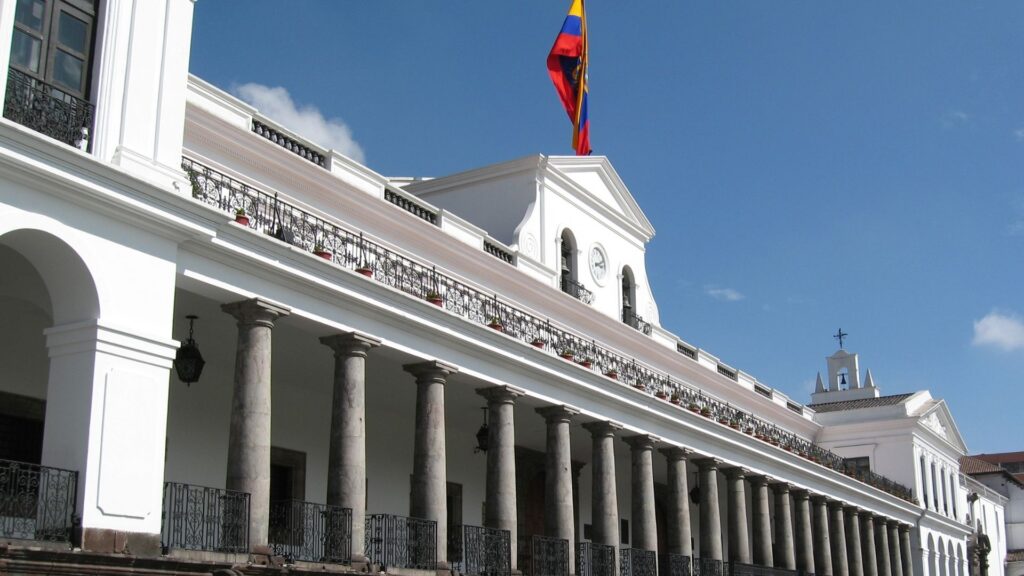
Just a few blocks away from the San Fransico Plaza, Quito’s Presidential Palace is a wonderful example of 16th-century architecture. The building was originally a conglomerate of several private royal homes, but they were rebuilt in the 1800s to form the Palacio de Carondelet.
The striking white building emulates order and beauty. The palace is built around a central courtyard adorned with blowers and a water fountain. There is even a mosaic mural by the famous Oswaldo Guyasamín, a well-known artist and national treasure.
6. Explore La Ronda
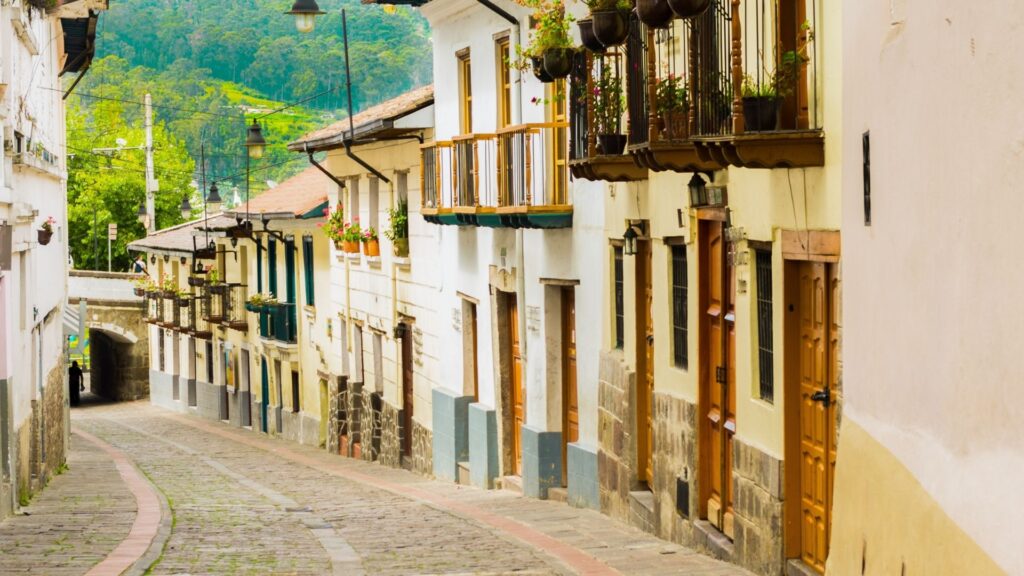
La Ronda is one of the most magical neighborhoods in Quito. As part of the UNESCO historical district, the winding street has become a well-known attraction in the capital city.
The street itself dates back to Incan times, but this area is known for striking Spanish architecture. It is thought to be one of the oldest streets in Quito. The ancient cobbled path is lined with 18th-century houses that have been home to poets, musicians, and impactful politicians.
7. Visit Quito’s Iconic Basílica del Voto Nacional
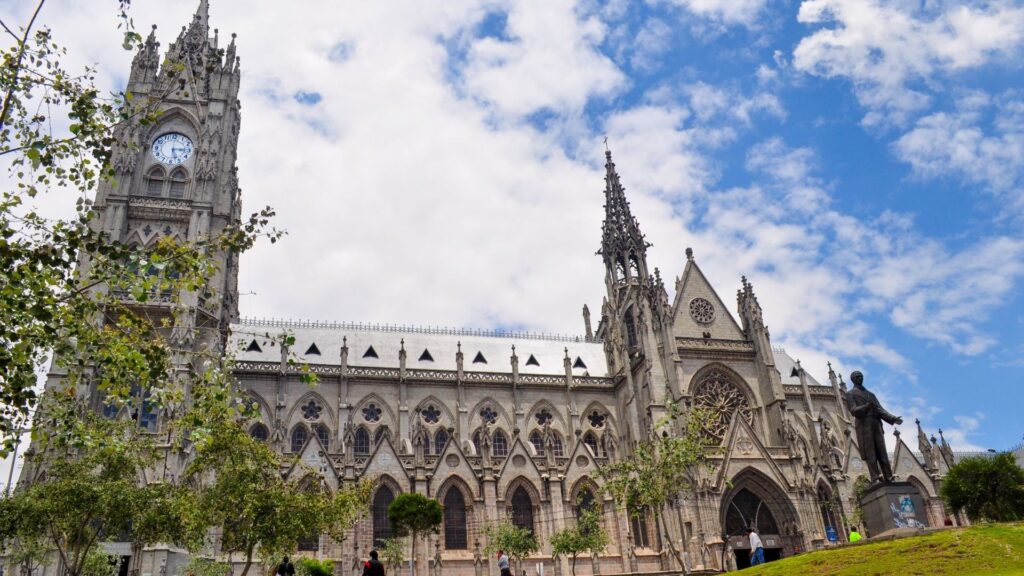
The Basílica of the National Vow is an enchanting Roman Catholic church located in the historic center of Quito. It is the largest neo-Gothic basilica in the Americas. Soaring spires reach the heavens, and ornate stained-glass windows allow light to flood the church.
It was built as a lasting honor and reminder of the consecration of Ecuador to the Sacred Heart, one of the most widely practiced Catholic devotions. Construction began in 1884, and by 1885 it had become a religious commitment. The Basílica is technically “unfinished”, and local lore says that when the last brick is laid the world will come to an end.
8. Casa Museo Guayasamín
For art and history lovers alike, the former home of legendary painter Oswaldo Guayasamín is a site you must see when you visit Quito. The house-turned museum is a work of art in itself; stucco walls and undulating arches contrast sharp rooftop angles and are softened by vibrant green foliage and a pristine lawn. From the residence’s plaza, you are treated to a wonderful view of the city and rolling Andean foothills – but the real treasures are inside.
This gallery is home to the most robust collection of Guayasamín’s work, along with compelling pieces from his personal collection, such as pre-Columbian ceramic, bone figurines, burial masks, and more. These pieces are a reflection of Ecuador’s people and an inspiration to Guayasamín’s work.
Born in 1919 in Quito to a native father and Mestiza mother, Oswaldo Guayasamín made a grand impact in the world of art and politics. His paintings have been honored over the years with many awards, with recognition spanning from his home in South America to European audiences. His art captures the political oppression, racism, poverty, and class division found in much of South America. When you visit Quito, this museum is a must-see.
9. Compañia de Jesús Jesuit church
The Church of the Society of Jesus, known as la Compañía, took 160 years to complete. Over the years, four distinct architectural styles made their way into this exuberant church, creating a masterful complication of history. With Baroque being the most prominent, there are also Moorish elements, Churrigueresque stucco, and a Neoclassical designed chapel.
The stunning work of art is considered one of the finest examples of Spanish Baroque architecture in South America. When you walk inside, you’ll see why: every centimeter is meticulously decorated with gold leaf and frescos.
Visit Quito – the city is waiting for you to discover it
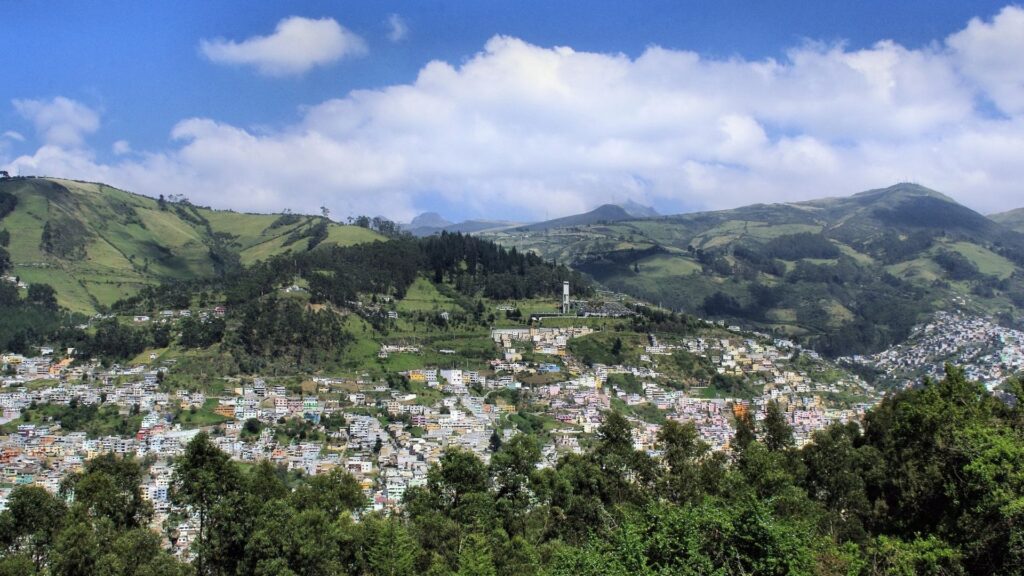
Quito is a vibrant city, full of art, culture, and history. With so many iconic sites to see, you will need to plan accordingly. Our tours are perfectly scheduled to make the most of your stay, ensuring you get a true sense of what the city has to offer. Visit Quito for a chance to explore the nation’s unique blend of Spanish and native history and culture.

